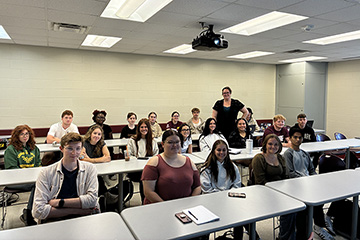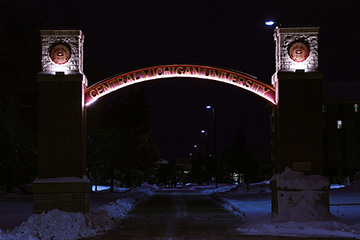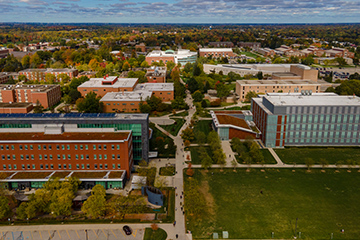Telling a more complete history
Historian gives community a voice about an environmental catastrophe
A Central Michigan University history professor wants to make sure that the story of one of Michigan’s worst environmental catastrophes doesn’t overlook important voices.
“I think that the historical record in many ways is dominated by the voices of public officials,” said Brittany Fremion, a faculty member of CMU’s history department.
The story begins in 1973, when a fire retardant was accidentally mixed with animal feed at Michigan Chemical Company in St. Louis, just east of Alma in Gratiot County. The contaminated feed was distributed to farms across the state until April 1974 when the mix-up was discovered.
The Environmental Protection Agency estimates that 9 million people were affected, and more than 500 farms were quarantined. People today are still suffering long-term health effects.
From 2018 to February 2020, Fremion led a team of students who conducted interviews with 68 people affected by the contamination. Their work was part of a much broader study about the health impacts resulting from the incident.
According to Fremion, the team sought out people with a broad range of experiences related to the event. They talked to people who worked at the chemical plant, farm families, residents of St. Louis, people who ate contaminated food and people who collected information about the aftermath while it was happening. The team also spoke with people who gathered data like physicians, veterinarians and attorneys.
The contamination created long-term health effects, she said. Women had higher rates of breast cancer; men had higher chances of thyroid problems. Fetuses were exposed through the placenta and babies were exposed while breastfeeding. Testing showed that 60 percent of Michiganders had elevated levels of PBB in their blood.
In addition to the direct impact, there were also indirect consequences on farmers, which Fremion described as collateral damage. More than 500 farms were quarantined so that the livestock could be destroyed to prevent further spread.
Other farmers whose livestock didn’t meet state standards were faced with difficult questions: Destroy their own herds and face financial ruin or sell contaminated animals that would wind up on grocery store shelves.
They lost their livelihoods and suffered from depression and anxiety, Fremion said.
“PBB reminds us that we have histories that matter,” she said. Fremion published a paper about the oral histories last December.
They will ultimately find a home in CMU’s Museum of Cultural and Natural History. It is one of two repositories of materials from the PBB contamination housed at the university.
The other is located at Clarke Historical Library. It includes the personal records of some of the people involved, health care providers and media reports
A conference took place in May to commemorate the disaster's 50th anniversary.




